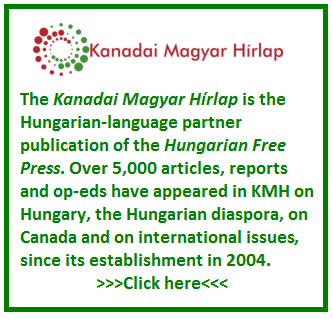The New York Times published a piece on Hungary’s public works (közmunka) programs, noting that this “work-for-welfare” initiative is gaining a real foothold in Hungary. The article by Rick Lymam takes the reader to the northeastern town of Halmaj (population: 1,800) and notes that prior to the introduction of the Orbán government’s compulsory communal works program, unemployment in the village stood at 20%. It is now down to 4%, with those involved in the program making between $185 to $285 per month. “There are between 300,000 and 500,000 people who are able to work, but their socialization to work is very weak,” the New York Times quotes Lajos Kósa, vice president of Fidesz. “They need to be led back to the world of employment, but they are lacking fundamental skills,” added Mr. Kósa. Key Fidesz politicians suggest that critical voices in the West simply don’t understand how a former communist country works and how its society has developed, thus it cannot appreciate the importance of “workfare.”
The notion of dismissing all criticism as simply the result of the outside world’s ignorance and that Prime Minister Viktor Orbán’s government is merely misunderstood abroad, does not address the fact that serious research into “workfare” programs have raised a wide range of concerns. Unfortunately, the New York Times piece did not refer to these concerns either, which include the fact that “workfare” programs tend to push wages down, creating a large, cheap and ultimately vulnerable workforce, which is not only taken advantage of by the state, but also by the private sector.
Additionally, in workfare programs, there is virtually no genuine opportunity for skills development. As such, those who are forced to work for welfare benefits cannot ever climb the social ladder. Upward mobility is eliminated. The Canadian Centre for Policy Alternatives published a study some years ago by University of Winnipeg professor Christopher Leo. Entitled Community Initiation of Welfare-to-Work, the study explores the Canadian experience with “workfare.” The study’s overarching critique of workfare programs in the Canadian provinces of Manitoba and Québec focus on the fact that these jobs are almost always temporary in nature, with no possibility of transitioning to permanent or on-going employment. Additionally, when some degree of training was provided for those entering these subsidized temporary jobs, the skills they acquired were not readily transferable. Professor Leo’s research concluded that locally-run municipal workfare programs tended to be more successful than those of a provincial scope. The key, it appears, is for upper levels of government to finance municipally supervised community works projects, but only when these workplace opportunities are “demonstrated to provide good jobs and useful job training.”
The problem with Hungary’s közmunka program is precisely that all of the jobs are entirely temporary, workers are badly underpaid and no transferable training opportunities are provided to those who are forced to work in exchange for welfare benefits.
In 2014, the lowest paid recipients of workfare took home only $230 CDN per month, for 8 hours of work 5 days a week. Those engaged in skilled labour took home just under $300 CDN.
The Hungarian Socialist Party (MSZP) seems to warming to the idea of közmunka (see István Hiller’s comments from earlier this month), even though they were staunchly critical of it when it was first announced by Prime Minister Orbán’s government. The Hungarian left needs to keep in mind that without calling for fair wages, training opportunities and the development of transferable skills, workfare does little more than perpetuate the existing cycle of poverty among the 300,000 Hungarians currently impacted by work-for-welfare measures.




